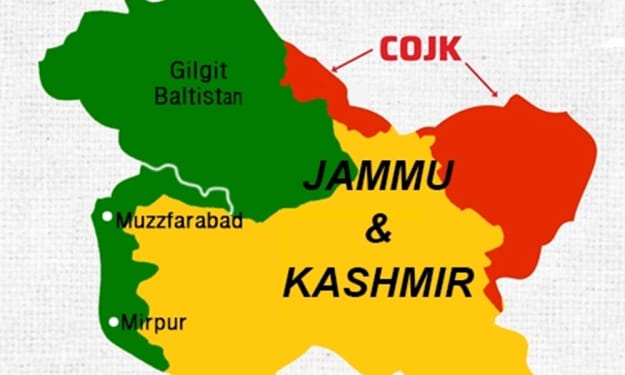10 most extraordinary festivals
10 most extraordinary festivals that showcase different culture and religions.

Top 10 extraordinary festivals or celebrations that showcase different cultures and traditions.
1. Holi (India): Known as the Festival of Colors, Holi celebrates the arrival of spring with vibrant colored powders and water fights, symbolizing the triumph of good over evil.Holi, also known as the Festival of Colors, is a vibrant and joyous celebration that holds deep cultural and religious significance in India. This ancient Hindu festival marks the arrival of spring and the triumph of good over evil. It is a time for people to come together, forget their differences, and revel in the spirit of unity and love.
One of the most striking aspects of Holi is the use of colors. People of all ages gather in streets and open spaces, armed with colored powders and water guns, ready to drench each other in a rainbow of hues. The air is filled with laughter and the sound of music as people dance and play, their faces and clothes transformed into works of art by the vibrant colors.
2. Carnival (Brazil): Brazil's Carnival is a dazzling spectacle of parades, music, and dance, with elaborate costumes and samba performances that reflect the country's rich cultural heritage.Brazil's Carnival is a dazzling spectacle that showcases the rich cultural heritage and vibrant traditions of the country. Held annually before Lent, this extravagant festival is a celebration of life, music, dance, and diversity, drawing millions of people from around the world to the streets of Brazil.
At the heart of Carnival are the samba schools, which compete in elaborate parades held in Rio de Janeiro's Sambadrome. These schools, representing different neighborhoods or communities, spend months preparing their floats, costumes, and choreography, with each school striving to outdo the others in creativity and grandeur.
3. Dia de los Muertos (Mexico): Celebrated on November 1st and 2nd, Dia de los Muertos honors deceased loved ones with colorful altars, sugar skulls, and marigold flowers, blending indigenous and Catholic traditions.Dia de los Muertos, or Day of the Dead, is a vibrant and colorful celebration of life and death that is deeply rooted in Mexican culture and tradition. Observed on November 1st and 2nd, this ancient tradition honors deceased loved ones and celebrates their memory with joyous festivities.
At the heart of Dia de los Muertos are the ofrendas, or altars, which are created to honor and remember the departed. These altars are adorned with photographs of the deceased, along with their favorite foods, drinks, and mementos. Marigold flowers, known as cempasúchil, are also used to decorate the altars, as they are believed to attract the spirits of the dead with their vibrant color and strong scent.
A
4. Chinese New Year (China): Also known as the Spring Festival, Chinese New Year is a time of family reunions, feasting, and fireworks, with each year represented by one of the 12 zodiac animals.Chinese New Year, also known as the Spring Festival, is the most important traditional festival in China, marking the beginning of the lunar new year. Celebrated by Chinese communities around the world, this vibrant festival is a time for family reunions, feasting, and cultural traditions.
One of the most iconic aspects of Chinese New Year is the lion and dragon dances. These colorful and energetic performances are believed to bring good luck and prosperity for the coming year. The dances are accompanied by the rhythmic beat of drums and cymbals, creating a festive atmosphere.
Another important tradition of Chinese New Year is the giving of red envelopes, or "hongbao," containing money. These envelopes are given to children and unmarried relatives as a symbol of good fortune and prosperity.
5. Diwali (India): Known as the Festival of Lights, Diwali celebrates the victory of light over darkness and good over evil, with fireworks, oil lamps, and colorful rangoli decorations.Diwali, also known as the Festival of Lights, is one of the most important and widely celebrated festivals in India. It symbolizes the victory of light over darkness and good over evil, and is celebrated with great enthusiasm and fervor by people of Hindu, Jain, Sikh, and Buddhist faiths.
The festival typically lasts for five days, with each day holding special significance and traditions. Houses and public places are adorned with colorful decorations, oil lamps, and candles, creating a mesmerizing display of lights and colors.
One of the most cherished traditions of Diwali is the exchange of gifts and sweets among family and friends. It is also a time for cleaning and renovating homes, symbolizing the renewal of life and the welcoming of prosperity and good fortune.
6. Oktoberfest (Germany): Held annually in Munich, Oktoberfest is the world's largest beer festival, featuring traditional Bavarian music, food, and, of course, beer.Oktoberfest is the world's largest beer festival, held annually in Munich, Germany. This iconic event is a celebration of Bavarian culture, featuring traditional music, dance, food, and of course, beer.
The festival dates back to 1810 when it was first held to celebrate the wedding of Crown Prince Ludwig of Bavaria and Princess Therese of Saxony-Hildburghausen. Over the years, Oktoberfest has evolved into a global phenomenon, attracting millions of visitors from around the world.
At Oktoberfest, visitors can enjoy a wide variety of traditional Bavarian foods, including pretzels, sausages, roast chicken, and sauerkraut. There are also numerous beer tents, each offering a selection of Bavarian beers brewed according to strict purity laws.
7. Inti Raymi (Peru): A celebration of the Inca sun god Inti, Inti Raymi is a colorful reenactment of an ancient Inca festival, featuring music, dance, and rituals.
Inti Raymi, or the Festival of the Sun, is an ancient Inca celebration that honors the sun god Inti. Held annually in Cusco, Peru, this vibrant festival is a colorful display of Inca culture, tradition, and spirituality.
The festival dates back to the time of the Inca Empire when it was celebrated as a way to thank Inti for the bountiful harvest and to ensure a good crop for the coming year. Today, Inti Raymi is celebrated with a series of rituals, dances, and ceremonies that pay homage to the sun god.
One of the highlights of Inti Raymi is the reenactment of the Inca ceremony, which takes place at the Sacsayhuamán archaeological site overlooking Cusco. The ceremony features costumed performers, including the Inca, his family, and high priests, who offer prayers and sacrifices to Inti.
8. Songkran (Thailand): Thailand's New Year festival, Songkran, is celebrated with water fights and street parties, symbolizing cleansing and renewal for the year ahead.Songkran, also known as the Thai New Year, is a vibrant and joyous celebration that marks the beginning of the traditional Thai calendar. Held annually from April 13th to 15th, Songkran is a time for family reunions, paying respect to elders, and cleansing rituals.
One of the most iconic aspects of Songkran is the water festival, where people take to the streets to engage in friendly water fights. Water is seen as a symbol of cleansing and renewal, and the water festival is a way to wash away the misfortunes of the past year and welcome the new year with a fresh start.
Another important tradition of Songkran is the pouring of scented water over the hands of elders and Buddha statues as a gesture of respect and blessing. This ritual, known as "rod nam dum hua," is believed to bring good luck and prosperity for the new year.
9. Obon (Japan): A Buddhist festival honoring the spirits of ancestors, Obon is marked by traditional dances, lanterns, and the lighting of fires to guide the spirits back to the afterlife.Obon, also known as the Japanese Festival of the Dead, is a traditional Buddhist festival that honors the spirits of ancestors. Held annually in Japan during the month of August, Obon is a time for families to come together to pay their respects to deceased loved ones and to celebrate their memory.
One of the central traditions of Obon is the lighting of lanterns. Lanterns are hung outside homes and temples to guide the spirits of the deceased back to the world of the living. The lanterns are also floated on rivers and streams as a way to send off the spirits at the end of the festival.
10. Mardi Gras (United States): Celebrated in New Orleans, Mardi Gras is a lively carnival season with colorful parades, elaborate masks, and beads thrown to revelers, culminating on Fat Tuesday before Lent begins.Mardi Gras, French for "Fat Tuesday," is a vibrant and festive celebration that marks the end of the Carnival season and the beginning of Lent in many Christian traditions. While Mardi Gras is celebrated in various countries around the world, it is most famously associated with the city of New Orleans, Louisiana, where it has become a cultural phenomenon.
One of the most iconic aspects of Mardi Gras is the elaborate parades that take place throughout the city. These parades feature colorful floats, marching bands, and costumed revelers who throw beads, trinkets, and other goodies to the crowds. The parades are a celebration of creativity, with each float meticulously designed and decorated to reflect a specific theme.
Earnonline click
About the Creator
Enjoyed the story? Support the Creator.
Subscribe for free to receive all their stories in your feed. You could also pledge your support or give them a one-off tip, letting them know you appreciate their work.






Comments
There are no comments for this story
Be the first to respond and start the conversation.